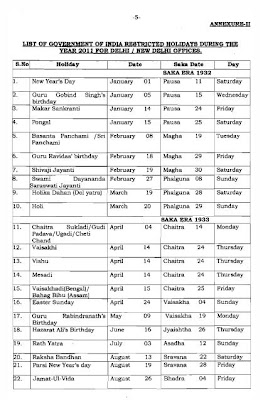DBOD.No.BP.BC. 69 /08.12.001/2010-11
December 23, 2010
The Chairmen and Managing Directors/Chief Executive Officers of
All Commercial Banks
(excluding Regional Rural Banks)
Dear Sir/Madam,
Housing Loans by Commercial Banks –
LTV Ratio, Risk Weight and Provisioning
LTV Ratio, Risk Weight and Provisioning
Please refer to paragraphs 104 to 106 of the Second Quarter Review of Monetary Policy 2010-11 (extracts enclosed), proposing certain measures in regard to housing loans by commercial banks. Accordingly, banks are advised as under:
1. Loan to Value (LTV) Ratio
At present, there is no regulatory ceiling on the LTV ratio in respect of banks’ housing loan exposures. In order to prevent excessive leveraging, the LTV ratio in respect of housing loans hereafter should not exceed 80 per cent. However, for small value housing loans, i.e. housing loans up to Rs. 20 lakh (which get categorised as priority sector advances), it has been decided that the LTV ratio should not exceed 90 per cent.
2. Risk Weight
In terms of circular DBOD.No.BP.BC.83/21.06.001/2007-08 dated May 14, 2008 the risk weights on residential housing loans with LTV ratio up to 75 per cent are 50 per cent for loans up to Rs. 30 lakh and 75 per cent for loans above that amount. In case the LTV ratio is more than 75 per cent, the risk weight of all housing loans, irrespective of the amount of loan, is 100 per cent. Henceforth, the risk weight for residential housing loans of Rs. 75 lakh and above, irrespective of the LTV ratio, will be 125 per cent to prevent excessive speculation in the high value housing segment.
3. Provisioning
It has been observed that some banks are following the practice of sanctioning housing loans at teaser rates i.e. at comparatively lower rates of interest in the first few years, after which rates are reset at higher rates. This practice raises concern as some borrowers may find it difficult to service the loans once the normal interest rate, which is higher than the rate applicable in the initial years, becomes effective. It has been also observed that many banks at the time of initial loan appraisal, do not take into account the repaying capacity of the borrower at normal lending rates. Therefore, in view of the higher risk associated with such loans, the standard asset provisioning on the outstanding amount has been increased from 0.40 per cent to 2.00 per cent with immediate effect. The provisioning on these assets would revert to 0.40 per cent after 1 year from the date on which the rates are reset at higher rates if the accounts remain ‘standard’.
Yours faithfully,
(B. Mahapatra)
Chief General Manager –in-Charge
Chief General Manager –in-Charge
Encls: As above
Loan to Value Ratio in Housing Loans
104. At present, there is no regulatory ceiling on the loan to value (LTV) ratio in respect of banks’ housing loan exposures. In order to prevent excessive leveraging, it is proposed:
- that the LTV ratio in respect of housing loans hereafter should not exceed 80 per cent.
Risk Weights on Residential Housing Loans
105. At present, the risk weights on residential housing loans with LTV ratio up to 75 per cent are 50 per cent for loans up to Rs. 30 lakh and 75 per cent for loans above that amount. In case the LTV ratio is more than 75 per cent, the risk weight of all housing loans, irrespective of the amount of loan, is 100 per cent. Accordingly, it is proposed:
- to increase the risk weight for residential housing loans of Rs. 75 lakh and above, irrespective of the LTV ratio, to 125 per cent.
Teaser Rates for Housing Loans
106. It has been observed that some banks are following the practice of sanctioning housing loans at ‘teaser rates’, wherein the loans are offered at a comparatively lower rate of interest in the first few years, after which rates are reset at higher rates. This practice raises concern as some borrowers may find it difficult to service the loans once the normal interest rate, which is higher than the rate applicable in the initial years, becomes effective. It has been observed that many banks at the time of initial loan appraisal do not take into account the repaying capacity of the borrower at normal lending rates. In view of the higher risk associated with such loans, it is proposed:
- to increase the standard asset provisioning by commercial banks for all such loans to 2 per cent.








